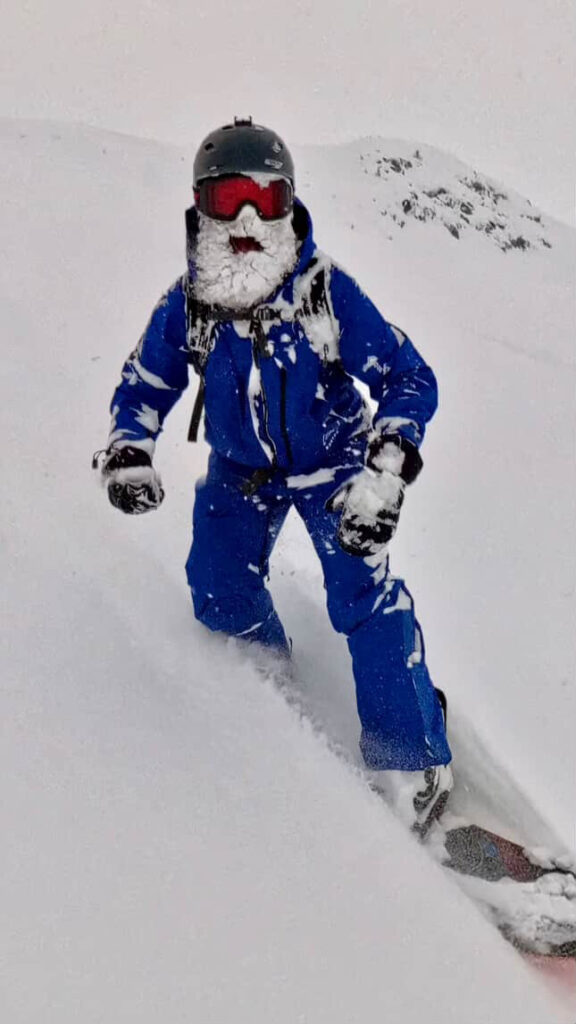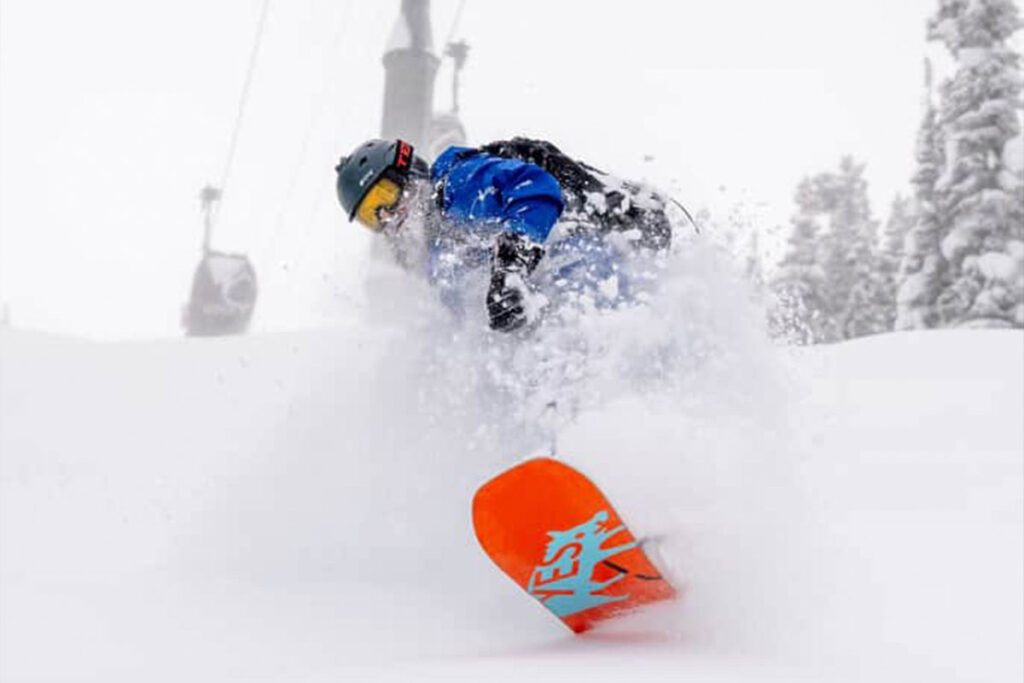Before the skis can hit the slopes, it’s snow expert and meteorologist Luke Snow, who delivers the forecasts that determine whether the sport events can run.
In the world of sport, few forces are as unpredictable and as powerful as the weather.
While it’s often overlooked, it’s responsible for delaying and cancelling countless competitions and threatening athlete safety.
Snow is one of the most critical elements. A slight change in snowfall or temperature can turn a well-prepared course into a dangerous challenge.
Luke Stone, who is more commonly known as Luke Snow, understands this better than anyone.
“I would say downhill and backcountry skiing and snowboarding are certainly one of the most weather-dependent sports and can expose the participant to significant danger,” says Snow.
He is a professional meteorologist, specialising in snow forecasts for the top ski resorts around the world.
“If you don’t have any idea about the conditions on the mountains, then it’s extremely, extremely dangerous,” says Snow.
His love for snow forecasting was born on the slopes.
“I started as a skier when I was around age four or five, then when I was older, I switched to snowboarding.”
His connection to the mountains sparked questions and an interest in how the weather can affect his time on the slopes.
“I have been passionate about meteorology since I was a kid, and I’ve been obsessed with snow for a long time. As a snowboarder, the snow conditions are very crucial to making the most out of my experience on the mountain,” says Snow.
So, what is the perfect weather for snow sports on the mountain?
“That depends a lot on your preferences.
“You know, as someone who loves to snowboard in powder, I prefer it to have just snowed a lot and for it to have been during cold temperatures with very low winds, because that produces the most desirable snow quality, which is a light, fluffy type of snow. I also want it to be deep enough so that you can’t really feel any surface that existed prior to the recent snow.”

The ideal weather varies for everyone on the mountain. Some prefer sunny, alpine blue skies. They like great visibility and trails that have been smoothed out by the resort grooming machines. Others like the spring weather, when the temperatures are warmer and the snow is softer.
One thing that everyone on the mountain agrees on is to avoid the slopes when the weather conditions become too dangerous.
As a forecaster, Snow’s role is to issue regular online forecasts that keep skiers, snowboarders, and mountain staff safe and aware of the risks.
This includes updates on snowfall, temperature, and safety warnings about what bad weather looks like on the slopes.
“Wind is definitely a major factor. Additionally, if there’s so much snow that it presents a really high avalanche risk. Also, probably less common but not never, if the temperatures are just too cold and the risk of frostbite is so high,” says Snow.
“It’s challenging to predict the weather on the mountains because it can change pretty fast.”
Avalanches are one of the most significant dangers of the fast-changing mountain weather.

Snow explains, “The sun can change the snow pretty rapidly and significantly, especially when the strength of the sun is more direct on the snow. Temperature too, if it was below freezing overnight then warms up a lot in the day, then this can change the quality of the snow which increases the avalanche danger.”
“Plenty of people die every year in avalanches and these people are experienced people who do this all the time.”
While many winter sport events take place on the maintained resort slopes, some exist in the ungroomed and unpatrolled backcountry.
“The type of avalanche control work that resorts do makes the avalanche risk less concerning there,” says Snow.
“In the backcountry, the weather can especially result in deadly avalanches. If you’re not aware of those and you’re out there, there’s a very significant risk that you could get hurt or killed.”
Ben Burley has competed internationally in mogul skiing as a member of the England team. He has skied through Canada, France and heliskied in Panorama British Columbia. He tells Sidelines: “If you’re outside the resort, avalanches are usually one of the bigger risks to consider.”
Not only must backcountry skiers and snowboarders be aware of changes in wind, temperature and the snow itself, they must also know what to do in case of an avalanche.
“I have done my avalanche safety training,” says Burley.
“If you go outside the resort you should have a beacon (transceiver), an airbag, a probe and a shovel and you should also always go with other people in case you get buried.”
Knowing how to use this equipment is also crucial.
“If you do get caught in an avalanche, you should use your airbag to stop you being buried as much. The other people then use their beacons to find you from the signal that transmits from yours. This is through a beeping sound that changes depending on if you are closer or further away,” Burley says.
“Once you are as close as possible to the buried person you get your probe out and poke it in the snow gently until you reach the buried person. Then when you’ve found them, you get your shovel and you can dig them out.”
So, if skiers or snowboarders wish to venture into the backcountry, they should carry with them the correct equipment, assess the steepness of slopes – as steeper slopes can also increase the risk of avalanches – and before anything check Luke Snow’s forecast.
He says: “To forecast the weather and really what all meteorologists do is, we look at different types of predictions made by weather models.”
“I also rely a lot on weather stations that provide weather data from remote locations, such as temperature, wind, wind direction, how much snow fell, how much rain fell, stuff like that.”
For forecasters like Luke Snow, staying ahead of changing weather conditions is crucial and for athletes like Ben Burley being aware of these forecasts can prevent disasters.



